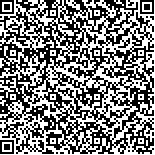下载中心
优秀审稿专家
优秀论文
相关链接
摘要

气象卫星热红外通道能够探测到晴空区域内由大气水汽、沙尘气溶胶等物质含量分布不均所导致的微弱的纹理信息,通过追踪水汽和沙尘气溶胶纹理的移动可以反演出风场。然而这些信号很容易受地表温度变化的影响,需使用合适的算法来减弱地表温度干扰、提取微弱的示踪物信号。本文结合分裂窗差值理论,对使用分裂窗差值算法提取晴空区微弱示踪物信号进行数值模拟分析,并应用于晴空区风场的实例反演。数值模拟图像的结果显示,分裂窗差值算法可以削弱地表对示踪物信号的影响,突出水汽和沙尘气溶胶的分布特征,验证了分裂窗差值法的可行性与优越性。实例分析也表明,使用分裂窗差值图能够反演出单通道云图难以得到的晴空区低层风场,且反演结果与NCEP风场资料比较一致。
The infrared channel of geostationary satellites can detect weak texture information resulting from the uneven distribution of atmospheric water vapor and dust aerosol in cloud-free regions. Atmospheric Motion Vectors (AMVs) for cloud-free regions can be retrieved by tracking water vapor motion or dust aerosol motion. However, weak information is easily affected by changes in surface temperature. Therefore, a suitable algorithm must be developed to decrease surface temperature interference and to extract weak information. Basing on split-window infrared theory, we perform a numerical simulation of extracting weak information by using the split-window Brightness Temperature Difference (BTD) algorithm. We also apply this algorithm to instance analysis. The numerical study indicates that using BTD images can weaken the influence of surface temperature and highlight the distribution characteristics of water vapor and aerosol. It also explains the feasibility and superiority of this algorithm. In cloud-free regions, low-level wind that is hard to obtain by only using IR1 or IR2 images can be obtained by using BTD images. The results of the cases agree with the wind field of the NCEP reanalysis data.

